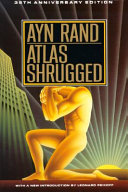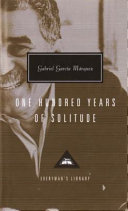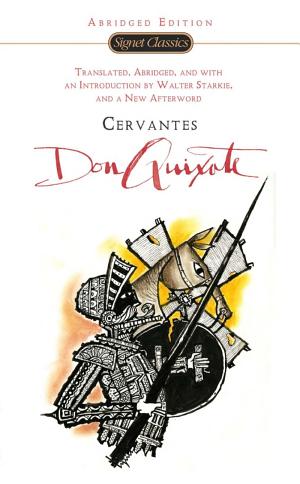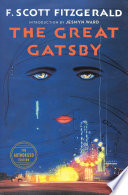Estimated read time: 6 min read
One Sentence Summary
The wealthy and creative individuals of society go on strike in protest against increasing government control and regulation.
Table of Contents
Introduction
"Atlas Shrugged" is a philosophical novel by Ayn Rand, first published in 1957. The book explores Rand's philosophy of Objectivism through the experiences of its characters and their interactions. With its thought-provoking narrative and exploration of individualism, "Atlas Shrugged" has sparked discussions and debates since its release.
Brief Synopsis
Plot Overview
"Atlas Shrugged" is set in a dystopian United States, where industrialists and innovators face increasing government intervention and regulation. The story unfolds as the economy falters, and society is on the brink of collapse. Against this backdrop, the novel follows the lives of several characters whose paths intersect in profound ways.
Setting
The novel is primarily set in the United States, depicting a society in decline. The world portrayed in "Atlas Shrugged" is characterized by declining productivity, government overreach, and a pervasive sense of despair among the citizens.
Main Characters
The novel features several main characters, each representing different aspects of Ayn Rand's Objectivist philosophy.
| Character | Description |
|---|---|
| Dagny Taggart | The Vice President of Operations at Taggart Transcontinental, a railroad company. |
| Hank Rearden | A self-made steel magnate who invents a revolutionary metal alloy known as Rearden Metal. |
| John Galt | An enigmatic figure who leads the strike of the world's creative and productive individuals. |
| Francisco d'Anconia | A wealthy and influential industrialist with a complex and mysterious persona. |
| James Taggart | Dagny's inept and manipulative brother, who holds a prominent position within the railroad company. |
Story Points Over Chapters
Part One: "Non-Contradiction"
Chapters 1-5
- Dagny Taggart struggles to maintain the operations of Taggart Transcontinental amidst economic and social challenges.
- Hank Rearden faces scrutiny over his innovative Rearden Metal and its impact on the steel industry.
- The mysterious figure of John Galt begins to be mentioned in conversations among the characters.
Part Two: "Either-Or"
Chapters 6-10
- The struggles within the railroad and steel industries intensify, reflecting the broader societal and economic turmoil.
- Dagny and Hank form a deepening connection as they navigate their respective challenges.
- The character of Francisco d'Anconia emerges as a prominent figure with a complex and enigmatic personality.
Part Three: "A is A"
Chapters 11-15
- Tensions between the government and the industrialists escalate, leading to increased conflicts and moral dilemmas.
- The concept of the "strike" and the identity of John Galt become central to the narrative.
- The societal decay and government interference reach a critical point, impacting the lives of the main characters.
Part Four: "The Motor of the World"
Chapters 16-20
- The theme of individualism versus collectivism takes center stage, as the characters confront the consequences of their choices.
- Dagny and Hank's relationship becomes increasingly complex, mirroring the societal forces at play.
- The narrative builds towards a climax, as the motivations and intentions of John Galt and the striking individuals begin to unfold.
Part Five: "The Climax of the D'Anconias"
Chapters 21-25
- The conflicts between the industrialists and the government reach a tipping point, with far-reaching consequences.
- The truth about John Galt and his role in the unfolding events becomes a focal point of the story.
- The novel's themes of integrity, innovation, and the individual's place in society come to a head in this section.
Part Six: "The Non-Commercial"
Chapters 26-30
- The resolution of the narrative and the fates of the main characters unfold against the backdrop of societal upheaval.
- The consequences of the choices made by the characters reverberate through the story, shaping their destinies.
- The philosophical underpinnings of the novel are brought to the forefront as the story draws to a close.
Main Events
- The introduction of Rearden Metal revolutionizes the steel industry, sparking both admiration and resentment.
- Dagny and Hank navigate the challenges of maintaining their businesses and personal integrity in the face of increasing government control.
- The enigmatic figure of John Galt and his role in the narrative's events becomes increasingly central to the story.
- The escalating tensions between the industrialists and the government lead to a decisive conflict with far-reaching consequences.
Themes and Insights
Themes
- Individualism and Independence: The novel explores the importance of individual achievement and the consequences of stifling innovation and creativity.
- Integrity and Moral Courage: Characters in "Atlas Shrugged" grapple with the moral dilemmas posed by societal pressures and personal values.
- Capitalism and Government Control: The novel delves into the conflict between free-market capitalism and the encroachment of government regulation.
Insights
- Rand's Objectivist Philosophy: "Atlas Shrugged" serves as a vehicle for Ayn Rand's philosophy, emphasizing rational self-interest and the pursuit of one's own happiness.
- Critique of Collectivism: The novel offers a pointed critique of collectivist ideologies and their impact on individual freedom and societal progress.
- The Power of Innovation: Through characters like Hank Rearden and Dagny Taggart, the novel underscores the transformative potential of innovation and entrepreneurial spirit.
Reader's Takeaway
"Atlas Shrugged" prompts readers to contemplate the role of the individual in society, the consequences of stifling innovation, and the power of personal integrity. The novel's thought-provoking narrative and philosophical depth invite readers to explore the themes of individualism, morality, and the pursuit of excellence.
Conclusion
"Atlas Shrugged" continues to be a thought-provoking and divisive work, stirring discussions about its themes and philosophical underpinnings. Through its compelling characters and intricate plot, the novel offers a lens through which to examine the tensions between individual freedom and societal structures, making it a timeless and resonant piece of literature.
Atlas Shrugged FAQ
What is the main theme of Atlas Shrugged?
Who is the author of Atlas Shrugged?
What genre does Atlas Shrugged fall into?
What is the significance of the title 'Atlas Shrugged'?
What is the role of the character John Galt in Atlas Shrugged?





